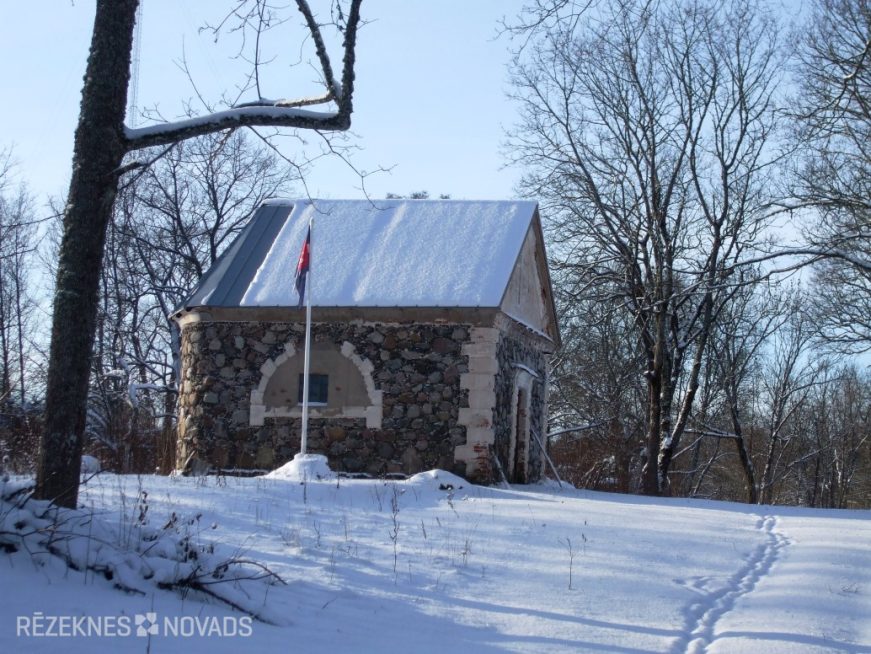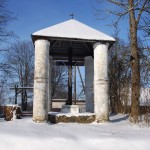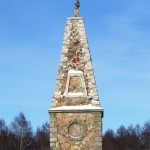New State Protected Cultural Monuments in Rezekne District

By order of the Ministry of Culture of the Republic of Latvia No. 5.1-1-244 of 17 November 2015 (entered into force on the day following publication in the newspaper Latvijas Vēstnesis No 231 (5549) on 25 November 2015), the list of national protected cultural monuments was supplemented by three architectural monuments in Feimani, Feimaņu parish, Rezekne municipality.
Feimaņu chapel included in the list of national protected cultural monuments as an architectural monument of local significance (State Protection No. 9090). Chapel built in 1806 Sometimes in severe winters it was also used as a chapel. It is a rectangular plan building with a semi-circular end and a two-slope tin roof. The building has a laconic volume solution with an era-specific facade finish where the most important is the aesthetic quality of the material used. The chapel was made of torn boulders with cluster filling; decorative finishing features used to settle red brick sticks, column borders, and massive profiled roof ledge.
The chapel completely preserved the original building, the architectural composition of the facades, the finishing details. Feimaņu chapel is a well-preserved model of this type of structure that reflects the traditional construction techniques of Latgale and describes the practices and experience of local builders of their time. The building has a significant cultural and landscape value for the region.
 On the edge of the road opposite THE Feimaņu Catholic Church is a wall-based shelter with crucifixes. Crucifix included in the list of national protected cultural monuments as an architectural monument of local significance (State Protection No. 9091). The crucifix is dated 18-19.gs. The base of the shelter (3.5 x 3.5 m) consists of a 0.5 m high cap built from an arable stone, but the corners of it rise from a brick-covered round-shaped column, which is covered in a height of 4,5 m with a four-slope roof. In the 60 s, the roof had been covered with wooden boards but was covered with tin in later years. Beneath it is a cross with a tree-cut Christ image. It is one of the ancient crucifixes in Latgale. Both the size of the shelter and the spinning style of Christ's image suggest that the poles or clerks of the Poles have been set up.
On the edge of the road opposite THE Feimaņu Catholic Church is a wall-based shelter with crucifixes. Crucifix included in the list of national protected cultural monuments as an architectural monument of local significance (State Protection No. 9091). The crucifix is dated 18-19.gs. The base of the shelter (3.5 x 3.5 m) consists of a 0.5 m high cap built from an arable stone, but the corners of it rise from a brick-covered round-shaped column, which is covered in a height of 4,5 m with a four-slope roof. In the 60 s, the roof had been covered with wooden boards but was covered with tin in later years. Beneath it is a cross with a tree-cut Christ image. It is one of the ancient crucifixes in Latgale. Both the size of the shelter and the spinning style of Christ's image suggest that the poles or clerks of the Poles have been set up.
The original building was fully preserved for the crucifix. The crucifix is a valuable architecture of a particular region, which, along with other sakrālajiem objects around Feimaņu Catholic Church (chapel, obelisk “cross-carrier”), has a significant regional cultural and landscape value, which also reflects the traditions of the 18 th-19 th century.
 Obelisk “cross-carrier” included in the list of national protected cultural monuments as an architectural monument of local significance (State Protection No. 9092). The monument “cross-carrier” or “Myura krysts”, as a pyramidal form, was built in 1825 as the anniversary of the anniversary announced by Pope Leon XII in 1828. The originator of the monument was the Livonian Canonic, the Rēzekne decane and the writer Joseph Kirkillo. On 10 m high, from torn boulders with cluster filler walls, an obelisk-shaped postament stands at 1,45 m high in a tree with a cross on his back. Obelisk decorated with stubble-shaped ledge, corner rusts and decorative edges in the planes.
Obelisk “cross-carrier” included in the list of national protected cultural monuments as an architectural monument of local significance (State Protection No. 9092). The monument “cross-carrier” or “Myura krysts”, as a pyramidal form, was built in 1825 as the anniversary of the anniversary announced by Pope Leon XII in 1828. The originator of the monument was the Livonian Canonic, the Rēzekne decane and the writer Joseph Kirkillo. On 10 m high, from torn boulders with cluster filler walls, an obelisk-shaped postament stands at 1,45 m high in a tree with a cross on his back. Obelisk decorated with stubble-shaped ledge, corner rusts and decorative edges in the planes.
The original volume, architectural artistic composition and decorative finish have been fully preserved by the cultural monument. The base of the monument “cross-vehicle” is a valuable architecture of a particular region, which, along with the other sakrālajiem objects around Feimaņu Catholic Church (chapel, crucifix with crucifixes), has a significant regional, cultural and landscape value, which also reflects the local construction and craftsmanship traditions of the time.
The historic figure of Christ had been hard, and in 1990, an image of the cockpit Anton Ranana was installed on the base of the monument (which is not considered as a separate movable art value or part of the architectural monument).
National Inspections for the Protection of Cultural Monuments
Latgale Regional Branch
Photo: Wilma Platipe